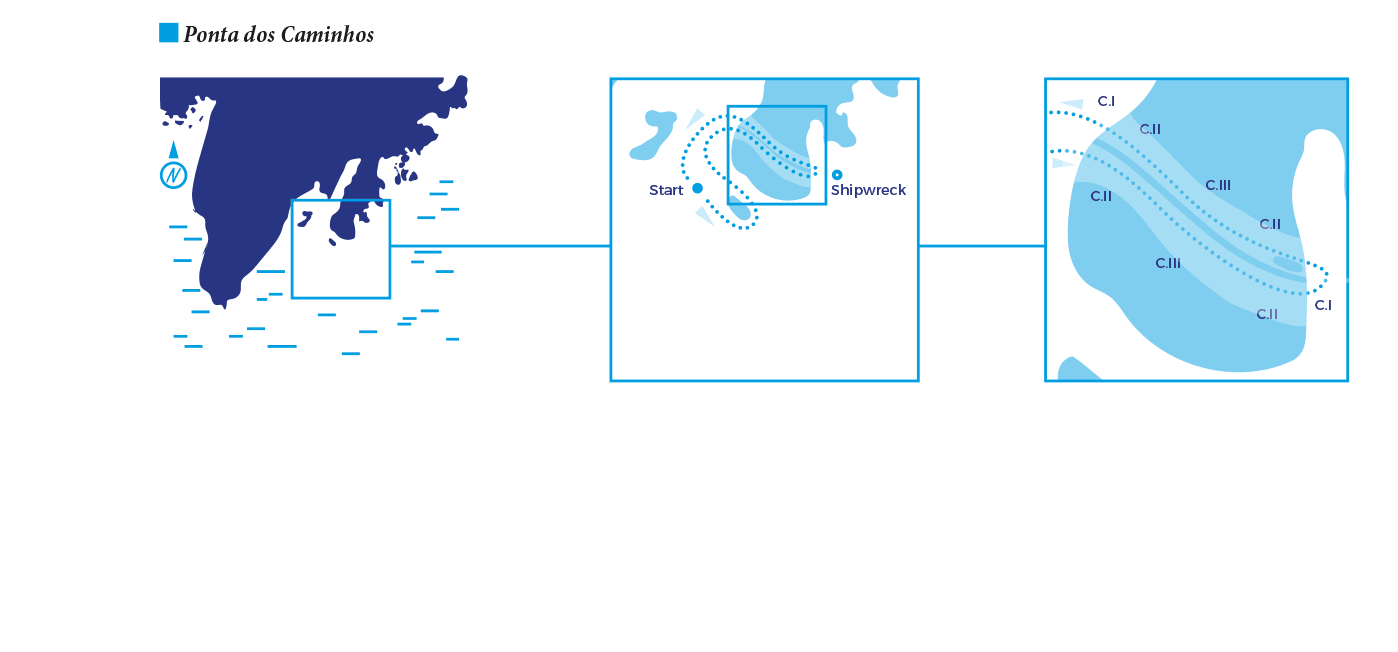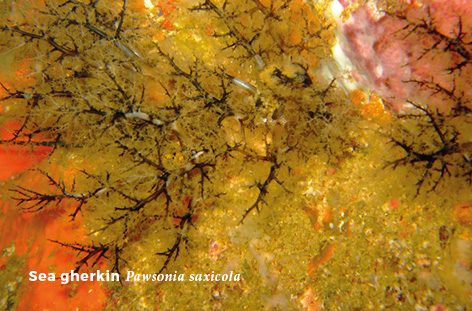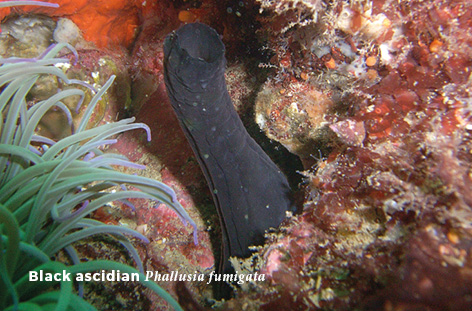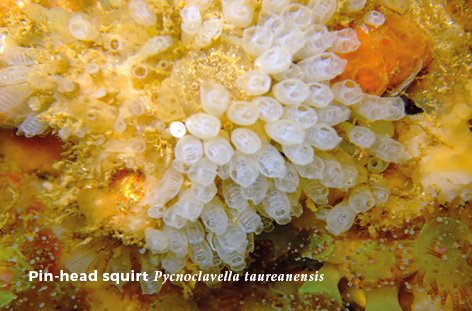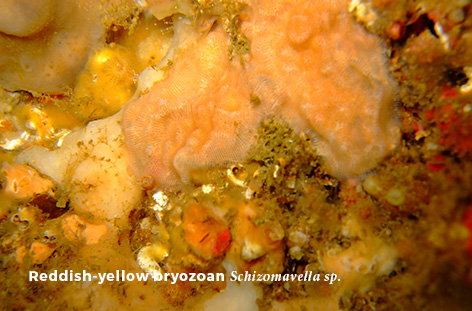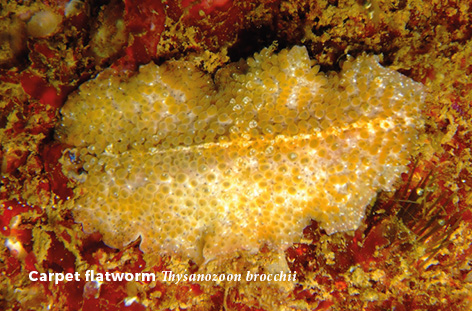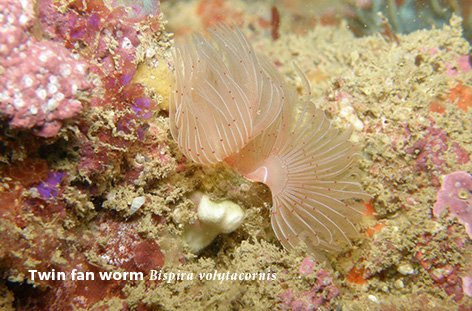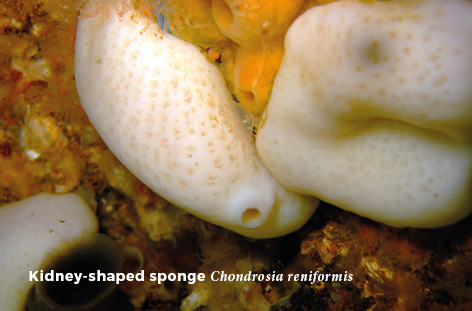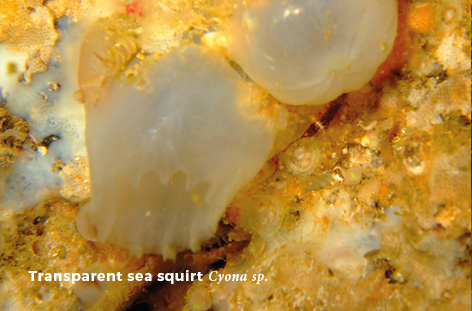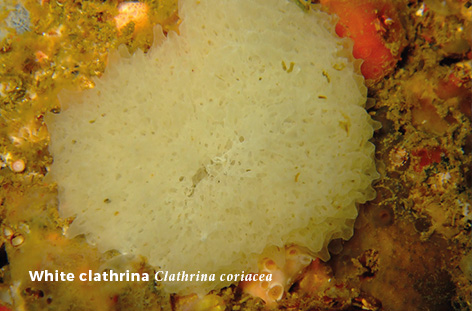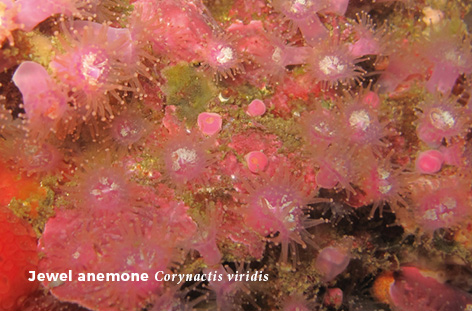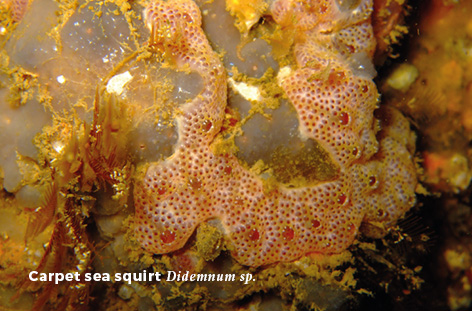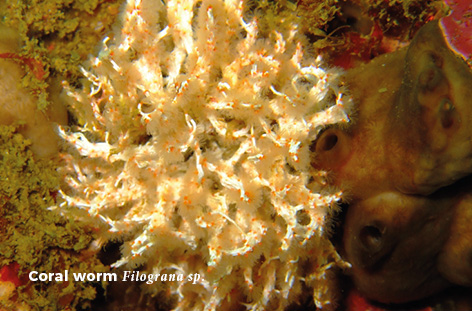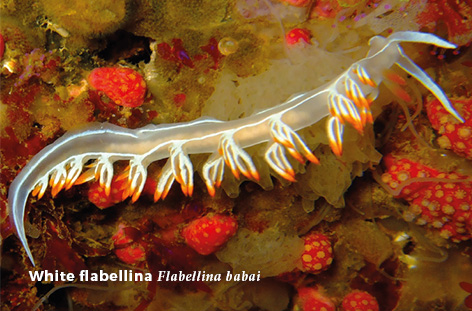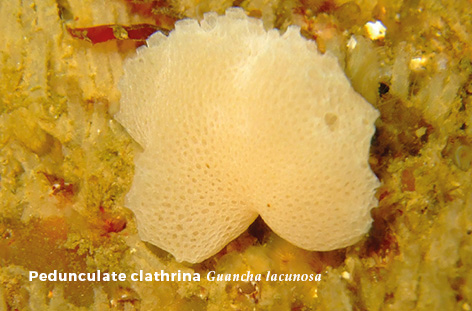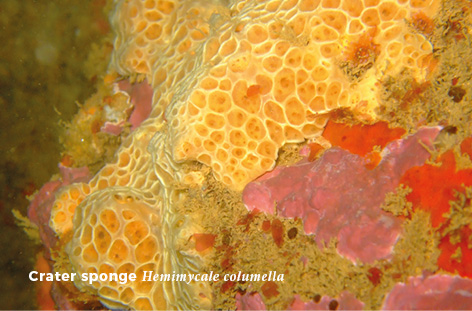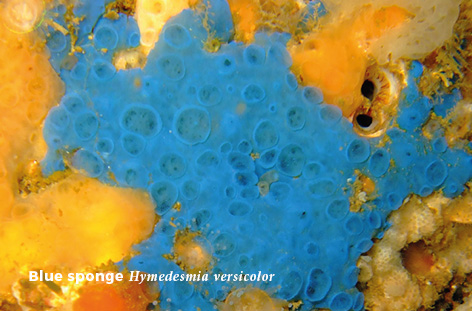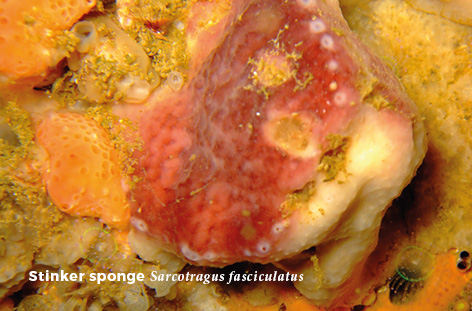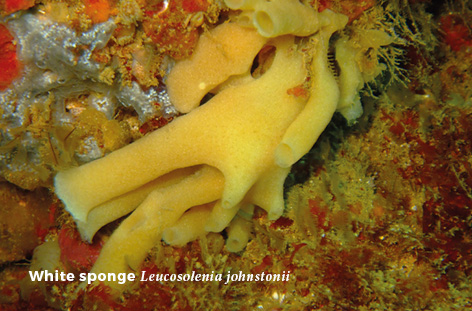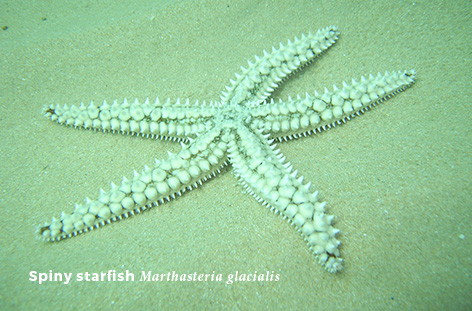Ponta dos Caminhos (Sagres)
Also called “O Santuário”, this diving site is located at the edge of the cliff that surrounds the bay of Martinhal. The diving area has two huge natural and parallel tunnels, linked at the surface.
The route starts at about 10m from an underwater islet (average depth of 15m) that should be seen on the port side. The diver must go around this rocky formation and approach the entrance of the first tunnel, that is located on his/her right side (average depth of 16m). Along this trail, the sandy bottom is covered with rocky outcrops inhabited by several species of algae.
The tunnels are moderately illuminated and exposed to the local hydrodynamic characteristics, and can be divided in three zones corresponding to different biological settlements: the entrance area (C.I), the semi-dark area(C.II), and the dark area(C.III).
The first tunnel is wide and has an average depth of 18m. The variety of marine macrofauna that inhabits the walls and the substrate should be explored by the diver (e.g. sponges and sea stars). Species such as the white clathrina (Clathrina coriacea),the jewel anemone (Corynactis viridis),the crater sponge (Hemimycale columella)or the pedunculate clathrina (Guancha lacunosa) can be frequently observed.In the final section of the tunnel, the substrate is covered with big pebbles with high algae cover and calcareous sponges (Leucosolenia complicata and G. lacunosa). In front of the exit of the first tunnel lies the wreck of the Danish cargo ship Nordsoen that sunk during the 1st World War.
To enter the second tunnel, the diver must go around the exit of the first tunnel that will be on his/her left side. The second tunnel, exposed to stronger hydrodynamism, currents and waves conditions, is characterized by the same generic fauna of the first tunnel, but with significantly lower densities. The substrate is mostly deprived of marine life, and is constituted mostly by small pebbles or gravel. The differences between the animal species that inhabit the illuminated areas of the tunnels (entrance and exit) and the darker areas of the middle of the tunnels (semi-dark and dark zones) must be stressed.
In the darker zones of the tunnel, the diver can observe species such as: the kidney-shaped sponge (Chondrosia reniformis),versicolor sponge (Hymedesmia versicolor),the jewel anemone (C. viridis),and the pin-head squirt (Clavelina nana).In the illuminated areas the diver can observe species such as: white clathrina (C. coriacea),jewel anemone (C. viridis),crater sponge (H. columella),pedunculate clathrina (G. lacunosa),spiny starfish (Marthasterias glacialis),fan worm (Serpula vermicularis)or the kidney-shaped sponge (C. reniformis). To return to the support vessel, the diver must reverse course at the exit of the second tunnel and head in the SW direction. This trail is characterized by the presence of pebbles and rocky outcrops with high fauna and flora coverage.
ACESSBoat |
HARBOUR DISTANCE1,3 nautical miles /10 min. |
DIFFICULTYLow |
AVERAGE TIME45/50 min. |
MAX. DEPTH18m |
HABITATRocky outcrops, Tunnels, Pebbles, Shipwrecks |
LANDSCAPE INTERESTHigh |
BIOLOGICAL INTERESTHigh |
CONSERVATION STATUSPMSACV/MPA; SCI |
SCUBA DIVING |
CERTIFICATIONDiver Level 2 – Autonomous Diver |
Conservation
This area requires specific and appropriate protective measures since it is as a Marine Protected Area (MPA), integrated in a Marine Park (Parque Marinho do Sudoeste Alentejano e Costa Vicentina – PMSACV), and is also a Site of Community Interest (SCI). This habitat, like others in Sagres, is fragmented and isolated, with rare, deep-sea species occurring in coastal areas, being therefore considered vulnerable (EU_Habitat Directive).
WARNING: Due to the nature of this area, extra care in buoyancy control is essential, so as not to disturb the organisms living on the bottom and to ensure good visibility.

